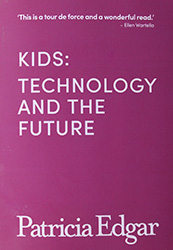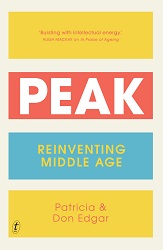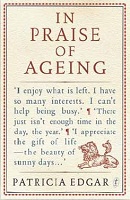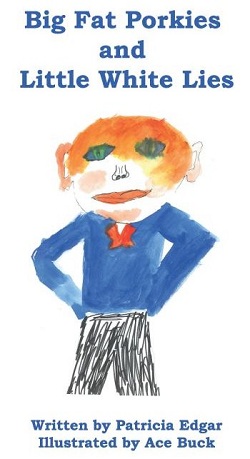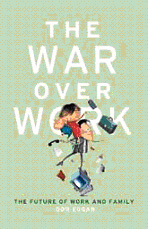
Patricia Edgar & Don Edgar

Commercialisation: from children to profit centres.
Patricia Edgar, Address to Showcommotion, (Children’s Media Conference), Sheffield UK July 2nd 2009
Over two decades we have been thoroughly schooled in the core value of the western world - we are born to consume. We eat too much, we drink too much, we want too much and we spend more than we earn. Our lifestyle has brought the world ecomomy to the brink of catastrophe, and although politicians around the world have admitted to the failure of the deregulated marketplace, the only immediate solution they can offer is to go shopping.
In this commercial world the television programming we produce for children is the major training ground teaching them to be acquisionists.
In March this year, the British Government’s chief scientific adviser Professor John Beddington predicted global catastrophe by 2030 because the demand for food, water and energy will exceed the supply. He predicts civil unrest and international conflict. This man is clearly not a crank (1).
So as program makers with the capacity and resources to mould children’s thinking and development what are we doing about this dire warning? What has been our contribution to this crisis of consumption? Are we capable of imaginative new thinking to enable children to be children once again, instead of the profit centres we have turned them into?
20 years ago children were not considered to be a profitable market. Programs were provided by public broadcasters as a service to the community and by commercial broadcasters as a result of regulation or the threat of regulation. This changed with the advent of children's channels in the 90’s and fierce competition between them for market share.
While Disney began marketing Mickey Mouse as far back as 1920s, it was the success of program length commercials such as He-Man and Masters of the Universe, GI Joe: a Real American Hero, Care Bears and Strawberry Shortcake, which entered the children’s program market in the early 80’s, that set light bulbs off in the minds of toy manufacturers and producers around the globe. The broadcasting, toy and food industries conceived the idea of tie-ins to link their products promoting Teenage Mutant Ninja Turtles, Transformers, Mighty Morphin Power Rangers and Action Man. All the industries involved boomed.
It wasn't long before the public broadcasters, threatened by the Children’s Channels wanted their slice of the cake. In the late 90’s along came Barney in the US, Teletubbies in the UK and Bananas in Pyjamas from Australia. It was a revelation to public broadcasters to discover there was money to be made from programs when accompanied by a suite of merchandise. Children’s television took on a whole new meaning.
Marketers took a closer look and over a few more years new profit centres were devised by dividing the preschool and children's market into four categories to exploit merchandising capabilities. We got baby television and tweens. These categories were not developed because of educational or child development needs they were purely market constructions invented for the purpose of selling more programs and products
Babies do not demand to be sat in front of television and there is no evidence that children two years and under learn anything from television; indeed it may be that the consequences for this age group are not neutral but negative.
Over the 15 year period that we have been flogging merchandise to the pre-school age group researchers have learnt a great deal about child development.
The first few years of life are a critical period for brain development and learning. Social inequalities influence early learning. A nationwide study in the UK has found that, by the age of three years, children from disadvantaged backgrounds are already educationally, up to a year behind children from more privileged homes.
We know the right kind of early childhood education programs can foster physical and cognitive development as well as social and emotional development. Disadvantaged children who have received high quality early childhood education are less likely to need remedial education, less likely to become involved in crime, and they earn more as adults. (2)
So it stands to reason that pre-school television programs should be developed with care and purpose from a well informed research base. Evidence suggests there would be a substantial return to society from Government investment in such programs.
Instead pre-schoolers, including babies, who are among the heaviest viewers of television in the community, have led a marketing bonanza for the toy, food and character merchandising industries at the expense of education and development. By the age of 10, 78 per cent of children say they enjoy shopping. Research has demonstrated that materialism in children is positively associated with shopping and spending, and negatively associated with school performance.
The main purpose of many of the programs is to teach young children character recognition, and of course, to want toys and goods displaying the character they recognize. Parents, who like to think their children are smart, get pleasure from their recognition of a character and reward them. The marketing gurus know how to hit the right spot.
The invention of ‘tweens’ ,pre-adolescents, 7/ 8 -12 year olds was another brilliant marketing concept which cared nothing for the impact on the social development of young girls and aimed to shrink the experience of childhood. Eight year olds have gone beyond a simple interest in toys and character merchandising, so a whole new lifestyle needed to be invented, built around commercial needs.
Young girls were sexualized. Initially introduced to fashion and beauty aids by magazines and reinforced by television advertising, the tween concept influenced the stories in children’s television drama and casting decisions.
Between five and 10 years children hadn't thought too much about their gender. Boys played with girls unselfconsciously, but magazines for tweens made sure children understood their sexual destiny early. Clothes, shoes, cosmetics, dolls and music were designed to create the illusion of a precocious, premature sexuality. Miniature sexy thongs, lacy bras, the promotion of parties serving miniature mocktails were designed to simulate sophisticated adult life.
The marketing strategy that defined Tweens has worked brilliantly and 7-12 year old girls have become conscious of their appearance, weight and what clothes they wear. Tiny, bright, spindly, young things, who should be out playing chasey are now worrying about what they look like and whether they fit in with their peers. They aspire to have a brazilian wax on their downy pubic hair, but still cry at night when they miss their mums on a sleepover.
Gradually it has emerged - and been well documented - that the blurring of childhood, by leading kids into adolescence before they are emotionally ready has serious risks. Eating disorders, self-harm and body image concerns are ‘extremely prevalent’ or ‘well known’ in 85% of Australia’s schools. (4)
Many girls are struggling to understand appropriate sexual behaviour when images presented to them are so precocious, and interestingly, there is now a decreased desire by girls to participate in sport.
Boys do not escape this pressure. They too are concerned about their body image. They are bombarded by images designed to arouse. And just as girls can never be the air-brushed fantasy on the glossy pages, no matter what they subject themselves to, boys can never be that perfect, pumped-up poster boy hero. In this context there is an increase in mental health problems and conduct disorders in boys -such as bullying and fighting - and eating and emotional disorders -including phobias and depression - in girls.
While physical perfection is the standard media image, children have never been fatter.
Twenty per cent of American, Australian and English children are overweight and ten per cent are obese. These young people will battle illness for most of their lives – type 2 diabetes, bone disease, respiratory and cardio-vascular diseases and the hospital systems already over burdened will not cope. In Australia studies put the cost of obesity in children and adults last year at $21 billion dollars.
For the first time in more than a century, life expectancy may fall with the real prospect that parents may outlive their children.
Yet children are targeted relentlessly by companies with marketing campaigns promoting fast foods with high-fat, sugar and salt content linked with promotions for toys, movies, television and film characters. Super sizing is common parlance. Shrek promoted the “Belly Bulge Combo” – popcorn, coke and M&Ms.
At a time when our social and economic structures are crashing down, most Governments are reacting with ambivalence to the issues affecting children, and most producers are turning a blind eye to the potential health and social impacts of their programs as they seek to retain funding for production.
Hasbro is undeterred announcing in May a partnership with Discovery to launch a new US kids and family cable Network to replace Discovery Kids to turn their toys into multi media brands. Advocacy groups are frothing at the mouth while they await product-placement infomercials as children’s programs.
Most parents are uneasy about the coarsening of the culture, the promotion of instant gratification, the separation of sexuality from the intimacy. A recent American survey ranked corruption in government and business, along with greed and materialism as two of the three most important moral challenges facing the nation - raising kids with the right values ranked first.
But when for fear of upsetting the electorate Govenments refuse to act, or fear of losing the next deal and the desire to exploit an easy market are the drivers of our programming decisions, is the challenge just too great?
What's disturbing is the chasm between the magnitude of our challenges and the smallness of our politics; the ease with which we are distracted by the appeal of an easy market, our chronic avoidance of evidence and the tough decisions required, our seeming inability to recognize the need to value childhood.
What is the responsibility of the producer, the distributor, the broadcaster or media operator at this time in this environment?
Have we so degraded our children’s television and sold out to commercialism, that neither the industry nor the audience is capable of recovery?
Is there any chance kids will generate correction themselves as they dessert television for interactive media and spawn their own programs?
References:
- What will we tell the next generation? Martin Flanagan, The Age April 27, 2009.
- The Spirit Level, Why more equal societies almost always do better, Richard Wilkinson and Kate Pickett, Allen Lane, 2009
- ACP plans pester power magazine: TheAustralian http://www.theaustralian.news.com.au/business/story/0,28124,25405869-7582,00.html
- Stephen Drill, Self harming, girls let down by schools, Sunday Herald Sun, November 23, 2008,The Australian Education Union 2008 ‘What women Want’ Survey of 219 female teachers.
- Daniella Miletic, TV glut of junk food ads, The Age, May 1, 2009-05-01
- Liz Porter, From ex-rated to the everyday: how the burbs went Brazilian, The Sunday Age November 2, 2008.
